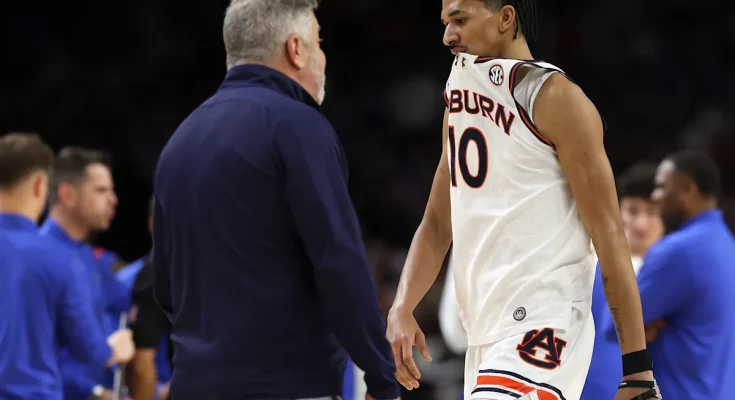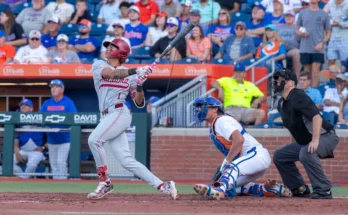College Coaches Are Now Strategically Recruiting Not Just for High School Talent, but for Future Transfer Portal Success and Roster Longevity
College basketball coaches are getting more adept at recruiting — not for their current class but setting the stage for transfers in the future. This evolution reflects a broader transformation in how the sport operates in the transfer portal era, where relationships, reputations, and foresight can often matter more than immediate commitments. The days of simply building rosters around five-star high school recruits are waning. Instead, coaches are adjusting to a new reality: one where the best roster moves may be two or three years in the making, and the player you miss today could be the star you land tomorrow.
In this new era of college basketball, it’s no longer just about signing the best high school prospects. It’s about managing relationships across time and programs. Coaches are increasingly aware that players are more likely than ever to change schools. The NCAA’s loosening of transfer restrictions, especially the one-time free transfer rule, has made it easier for student-athletes to seek new opportunities. As a result, coaches have adapted by playing the long game — keeping tabs on players they didn’t land out of high school, maintaining connections with grassroots coaches, and crafting a recruiting strategy that anticipates future roster needs before they even arise.
These developments have significantly altered the recruiting calendar. What used to be a relatively linear process — identify, evaluate, offer, sign — has become far more cyclical. Now, coaches might recruit a player during their junior or senior year of high school, lose them to another program, and still maintain enough of a relationship to make a second pitch when that player enters the portal a year or two later. The “first recruitment” might fail, but the “second recruitment” can succeed precisely because the foundation was already laid.
In many ways, this is simply an extension of the importance of relationships in recruiting, but the stakes are different now. Previously, missing on a recruit often meant they were gone for good. Now, it just means you might have to wait a little longer. Coaches have learned to be more patient, more strategic, and more attentive to the long-term possibilities. The best recruiters today don’t just build for the short term — they build pipelines, cultivate trust, and plant seeds that may not bloom until much later.
There are countless examples of players who spurned one program as high schoolers, only to transfer there down the line. These second-chance opportunities are now a crucial component of roster building. Consider how often elite programs land former top recruits on the second try. A player may initially choose a school based on fit, immediate playing time, or proximity to home, only to realize a year later that things aren’t working out. When they hit the portal, the schools that built trust early — even in a losing recruitment — are often best positioned to swoop in.
This shift has also required coaching staffs to become more data-driven and analytically aware of trends across the transfer landscape. They’re tracking portal entries year over year, identifying common factors that lead to transfers, and using those insights to guide both their initial recruiting and their roster management strategies. For example, if a coach knows that a certain type of player tends to leave their first school due to coaching changes or role dissatisfaction, they can tailor their recruiting messages to highlight stability, development, and opportunity. The goal is not just to pitch a player once, but to ensure that your program is always viewed as a viable option — whether now or in the future.
The importance of brand-building has also grown. In the past, a coach’s recruiting prowess was largely judged by the high school class rankings. Now, it’s just as important to establish a reputation as a player-friendly program, one that develops talent, wins games, and prepares athletes for the next level. Coaches who do that well are often rewarded in the portal, even if they strike out on a recruit the first time. Players talk. They remember who treated them with respect, who sold an honest vision, and who stayed in touch without overstepping boundaries. The relationships built during high school recruitment often pay dividends long after a player has signed elsewhere.
It also helps that many staffs now include roles specifically focused on transfer recruitment. Just as there are assistants who specialize in scouting high school prospects or building relationships with AAU programs, some are now tasked with managing portal intelligence. These coaches monitor unhappy situations, keep tabs on players from past classes, and assess how former targets are developing elsewhere. This attention to detail ensures that when the portal window opens, they’re not starting from scratch — they’re executing a well-researched, targeted plan.
This new model has forced a reevaluation of roster construction as a whole. Coaches must now juggle not just high school signings and returning players, but also potential portal additions and possible departures. The puzzle is more complex, but also more flexible. A program might pass on a high school player they like because they believe they have a better chance to land him later, once he’s more seasoned and their own depth chart has changed. In turn, some high school players view their first college stop as just that — a first step rather than a final destination. Everyone involved now sees the roster as a fluid, ever-changing structure rather than a static list.
This shift hasn’t gone unnoticed by players themselves. Many are aware that the door to other opportunities remains open, especially if they perform well and maintain strong relationships with coaches and programs who recruited them before. It’s not uncommon for players to talk openly about schools that recruited them in high school and how those relationships influenced their transfer decisions. Coaches who were authentic, consistent, and honest — even in rejection — often earn second chances. Meanwhile, those who oversold or disappeared after a commitment elsewhere may find themselves out of the running when the portal door opens.
Of course, there are challenges. This more nuanced form of recruiting requires emotional intelligence, institutional patience, and long-term vision. Not every program has the infrastructure or stability to maintain meaningful relationships over several years, especially if there’s coaching turnover. And with roster spots limited, coaches can’t afford to gamble too heavily on players who might become available — they still have to build capable, competitive rosters in the here and now. Balancing current needs with future possibilities is one of the hardest parts of modern roster construction.
The coaches who are excelling in this environment tend to be the ones who embrace change rather than resist it. They see the transfer portal not as a disruption but as an opportunity to reshape their teams more quickly, fix recruiting misses, and build more experienced rosters. They also see the value in being known as a place players want to be, whether that’s at age 18 or 20. Programs that combine elite high school recruiting with smart portal strategy are the ones best positioned to compete for championships. It’s no longer about choosing one or the other — the best teams do both.
This strategy also requires schools to think more carefully about fit, development, and continuity. Not every player needs to be a five-star prospect. Sometimes, landing a four-star player who fits your system, stays for three years, and helps recruit others can be more valuable than chasing the most hyped name in the class. Coaches are becoming more aware of how personalities, maturity, and coachability factor into long-term success — traits that matter just as much in the transfer portal as they do during high school recruitment.
It’s clear that college basketball recruiting has entered a more layered, strategic phase. Coaches are no longer just trying to win the battles that are right in front of them. They’re trying to position themselves to win later, to be ready when opportunity strikes, and to make sure that no relationship is ever truly lost. The best recruiters now operate with a multi-year vision, aware that today’s miss could be tomorrow’s gain.
Ultimately, this evolution has made the sport more fluid, more dynamic, and arguably more competitive. Roster turnover remains high, but so does the potential for reinvention. Programs that adapt will thrive, while those stuck in an older model may find themselves left behind. As coaches become more adept at recruiting not just for their current class but for the next wave of transfer opportunities, they’re ensuring their teams remain not just talented — but built to last. And in the ever-shifting world of college basketball, that’s what it takes to stay on top.



